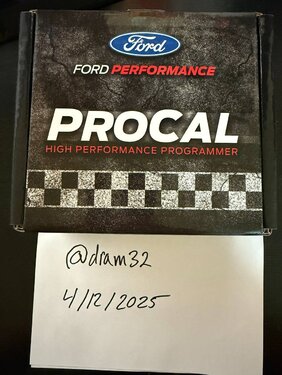KarateMonkey
Active Member
You could have got the Raptor, it only requires 87 octaneTemping and most likely fun but no.
If not for premium gas I would have bought the raptor.
2.7 is fine out of the box
Sponsored
You could have got the Raptor, it only requires 87 octaneTemping and most likely fun but no.
If not for premium gas I would have bought the raptor.
2.7 is fine out of the box
You and tuningchamp are both kinda right and kinda wrong. Octane ratings measure a fuel’s ability to resist detonation. Sources like Wikipedia mention compression specifically but if we put our scientist hats on for a moment we’ll recall from high school chemistry that pressure (compression) and temperature are most certainly related (pv=nrt). So a high octane fuel that can withstand higher compression without predetonation is indeed enduring higher temperatures too. As an aside, there’s a whole class of engines that run on this understanding, and they just compress atomized fuel until it goes BANG; they’re called diesels.I think you're wrong. Higher octane fuels don't ignite without higher compression. The difference isn't temperature. That's my understanding anyway.
Oh, bro, I am NOT "tuning"champ... Tubing.... from inner tubing on the family's lake as a kid.. HAHAYou and tuningchamp are both kinda right and kinda wrong. Octane ratings measure a fuel’s ability to resist detonation. Sources like Wikipedia mention compression specifically but if we put our scientist hats on for a moment we’ll recall from high school chemistry that pressure (compression) and temperature are most certainly related (pv=nrt). So a high octane fuel that can withstand higher compression without predetonation is indeed enduring higher temperatures too. As an aside, there’s a whole class of engines that run on this understanding, and they just compress atomized fuel until it goes BANG; they’re called diesels.
Raptor doesn't require premium fuel.Temping and most likely fun but no.
If not for premium gas I would have bought the raptor.
2.7 is fine out of the box
I don’t have one. When you open the gas fill door what’s stamped on the inside. My guess is premium?Raptor doesn't require premium fuel.
Hopefully the 3.0L tune for the 2025 will be soon after it!
I did have one. Sold it. Ran regular not premium.I don’t have one. When you open the gas fill door what’s stamped on the inside. My guess is premium?

That's not how it works. For example, when certifying lifting lugs and slings on heavy equipment, they are designed and tested to 2 1/2 working load. So, a 10-ton lifting sling is tested to 25 tons. Framework we build to carry loads are also design, built and tested to 2.5 times gross weight, and piping systems are hydro tested to at 2.5 times working pressure. Head room is always designed into the system.And you can make up to 405 hp with 91 or higher octaneon that same engine. So best of both worlds on that. Downside is cost as the RR is considerably higher priced and you lose a lot in towing due to the off-road focused performance suspension which limits vehicle stability when heavily loaded.
Just depends on what you're doing, but I'd wager that 5,500lbs is plenty for 90% of users. I think most of us maybe tow at most a side by side, ATV, small camper or bass boat which are the most common things in that weight range.
Big campers or larger boats etc. are best going to be handled by a full-sized F-150 as its not ideal to regularly tow max. I look at max towing / payload as "do it on occasion, but not regularly". If you regularly tow, I'd say it's safer to have a nice 2/3 derated margin, so maybe 5k on a regular ranger or 7k on an F-150 so you not pushing the thermal and mechanical stresses to the limit.
In engineering, if you want something to last, especially under harsh environmental, NASA, Military and Industrial typically call for 2/3 derating. If you stress something close to its absolute max, the lifespan is usually considerably shortened vs. running at 2/3 of its max where it will typically meet or exceed its lifespan.
I might say the RR is bit of an exception to that rule since the engine is more powerufl than the regular ranges 2.7 NANO and it's the same transmission. The lower capacity comes primarily from vehicle stability limitations rather than thermal management and physical stress on the drivetrain, so this is one truck I do think towing max is a bit less burdensome.
Here's a pic from my RR....87+ octaneI don’t have one. When you open the gas fill door what’s stamped on the inside. My guess is premium?

It’s somewhere on the ford website also. Wonder why they pushed it. Premium advertising is what made me look at the lariatHere's a pic from my RR....87+ octane
Basically, if you want more power out of an engine, you need to expect the need for premium fuel so that the added engine stress doesn't affect the durability as much.So basically the tune is useless if im not gonna run premium?
Any difference in power with premium?2.7 out of the box is fine for me too. I'll burn premium every 4th tank or so to make sure my injectors are happy.
